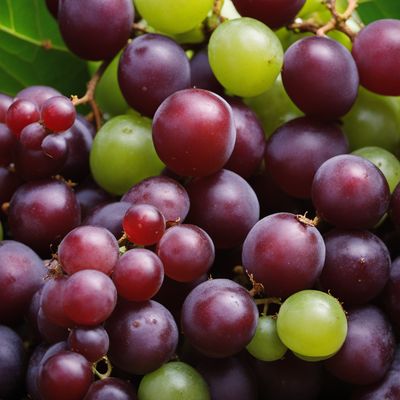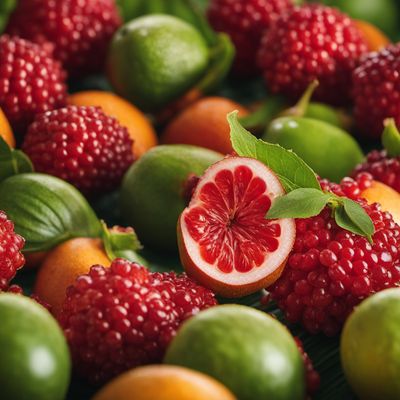
Ingredient
Nonis
The Exotic Powerhouse
Nonis are small to medium-sized fruits with a bumpy texture and a bright yellow color when ripe. They have a creamy, custard-like flesh that is juicy and slightly tangy, with a hint of sweetness. The flavor is often described as a combination of pineapple, citrus, and strawberry. The fruit is typically consumed fresh or used in juices, smoothies, jams, and desserts.
Origins and history
Nonis are native to Southeast Asia and have a long history of traditional use in Polynesian, Indian, and Hawaiian cultures. They are believed to have originated in the region encompassing Malaysia, Indonesia, and the Philippines. Nonis have been used for centuries in traditional medicine for their potential health benefits.
Nutritional information
Nonis are a rich source of vitamins, minerals, and antioxidants. They are particularly high in vitamin C, vitamin A, potassium, and dietary fiber. Nonis also contain compounds like xeronine and scopoletin, which are believed to have various health-promoting properties. However, it is important to note that more research is needed to fully understand the potential benefits of nonis.
Allergens
None known.
How to select
When selecting nonis, look for fruits that are fully ripe, with a bright yellow color and a slightly soft texture. Avoid fruits that are overly soft, bruised, or have moldy spots. Nonis should have a pleasant aroma, indicating their ripeness. If fresh nonis are not available, you can also find them in the form of juices, powders, or supplements.
Storage recommendations
To prolong the shelf life of nonis, store them in a cool, dry place away from direct sunlight. If the fruits are ripe, they can be stored in the refrigerator for a few days. Once cut, wrap the remaining fruit tightly in plastic wrap and refrigerate. Nonis can also be frozen for longer-term storage.
How to produce
Nonis can be grown in tropical or subtropical regions with warm temperatures and well-drained soil. They require a sunny location and regular watering. However, they are not suitable for cultivation in colder climates.
Preparation tips
Nonis can be consumed fresh, either on their own or added to fruit salads, smoothies, or yogurt bowls. They can also be juiced or blended into refreshing tropical beverages. In traditional cuisines, nonis are used to make jams, jellies, and desserts like pies or tarts. The fruit's tangy flavor pairs well with other tropical fruits, coconut, and citrus flavors.
Availability
Southeast Asia, Polynesia, India, Hawaii
More ingredients from this category » Browse all

Indian jujubes
The Sweet and Tangy Jewel

Babacos
Exotic Delight: Babacos

Jaboticabas
The Exotic Jewel of the Tropics: Exploring the Enchanting World of Jaboticabas

Ambarellas
The Tropical Delight

Dracontomelon duperreanum fruits
The Exotic Delight: Dracontomelon Fruits

Carambolas
The Star of Tropical Delights: Carambolas Unveiled

Aonlas
The Tangy Delight: Exploring the Unique Flavors of Aonlas

Bilimbis
Tropical Tang: Exploring the Unique Flavor of Bilimbis

Malayan mombins
The Tropical Delight: Exploring the Exotic Malayan Mombins

Malay pommarosas
The Exotic Delight: Malay Pommarosas - A Tropical Twist for Your Taste Buds

Maprangs
The Exotic Tanginess of Maprangs

Pommarosas
The Vibrant Pommarosas: A Burst of Tropical Flavor
